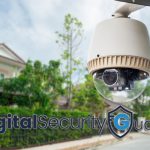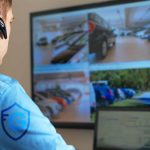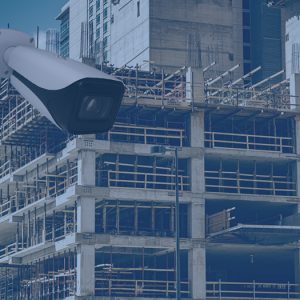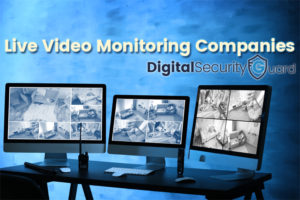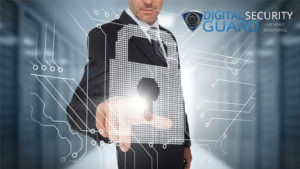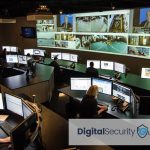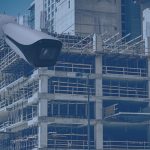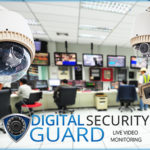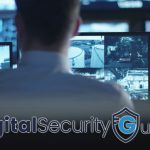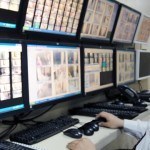You’ve seen the cameras. You understand they’re connected to the internet. But what actually happens when someone tries to break into your property at 2 AM?
Remote video monitoring isn’t just cameras recording footage for later review—it’s a sophisticated security system combining artificial intelligence, human oversight, and immediate response protocols to prevent crimes before they happen.
This comprehensive guide takes you inside a professional monitoring operation. You’ll discover exactly how the technology detects threats, how trained security professionals respond in real-time, and why this approach prevents 90-95% of crime attempts compared to traditional security guards’ 70-75% rate.
By the end, you’ll understand not just what remote monitoring is, but how it protects your business better than conventional alternatives.
Quick Overview: The Complete System
REMOTE VIDEO MONITORING ECOSYSTEM
━━━━━━━━━━━━━━━━━━━━━━━━━━━━━━━━━━━━━━━━━━━
YOUR PROPERTY MONITORING CENTER
━━━━━━━━━━━━━━━━━━━━━━━━━━━━━ ━━━━━━━━━━━━━━━━━━━━━
HD Cameras ️ Licensed Professionals
├─ Capture live video ├─ Monitor 8-16 feeds
├─ AI detection ├─ Verify threats
└─ Two-way audio └─ Coordinate response
↓ ↓
Network Video Recorder Response Protocols
├─ Local storage ├─ Two-way audio warning
├─ 30-90 day retention ├─ Law enforcement alert
└─ Redundant backup └─ Incident documentation
↓ ↓
Internet Connection Police Dispatch
├─ Primary: Wired ├─ Video verification
├─ Backup: Cellular ├─ Real-time updates
└─ 99.9% uptime └─ Evidence provided
⏱️ Total Response Time: 10-30 seconds
Component 1: The Camera Infrastructure
Camera Types & Capabilities
Standard HD Cameras (1080p):
- Resolution: 2 megapixels (1920×1080)
- Field of view: 90-120 degrees
- Night vision: 30-60 feet in darkness
- Best for: Indoor areas, general coverage
4K Ultra HD Cameras:
- Resolution: 8 megapixels (3840×2160)
- Exceptional detail for identification
- Enhanced digital zoom capabilities
- Best for: Compliance requirements, high-detail needs
PTZ (Pan-Tilt-Zoom) Cameras:
- Remote directional control
- 20-30x optical zoom
- 360-degree rotation
- Best for: Large areas, active tracking
Specialty Cameras:
- Thermal imaging: Heat-based detection
- License plate recognition: Vehicle tracking
- Wide-angle: 180-degree+ coverage
- Best for: Specific applications
Strategic Camera Placement
Perimeter coverage:
PROPERTY BOUNDARY MONITORING
━━━━━━━━━━━━━━━━━━━━━━━━━━━━━━━━━━━━━━━━
Corner 1 Main Entry
↓ ↓
▓▓▓▓▓▓▓▓▓▓▓▓▓▓▓▓▓▓▓▓▓▓▓▓▓▓▓▓▓
▓ ▓
▓ YOUR PROPERTY ▓
▓ ▓
▓▓▓▓▓▓▓▓▓▓▓▓▓▓▓▓▓▓▓▓▓▓▓▓▓▓▓▓▓
↓ ↓
Corner 4 Corner 3
Result: Complete boundary detection
Entry point monitoring:
- Primary entrances: 2 cameras (approach + face identification)
- Secondary entrances: 1-2 cameras
- Loading docks: Multiple angles
- Emergency exits: Interior + exterior views
Interior critical areas:
- Cash handling locations
- Inventory storage
- Equipment rooms
- Common areas/hallways
How Cameras Communicate
Power over Ethernet (PoE):
- Single cable provides power + data
- Eliminates need for electrical outlets
- Simplified installation
- Standard range: 300 feet per camera
Network connectivity:
- Cameras connect to local network
- Data flows to Network Video Recorder (NVR)
- NVR connects to monitoring center
- Encrypted transmission ensures security
Two-way audio capability:
- Built-in speakers and microphones
- Monitoring center can speak to intruders
- “You are being recorded. Police have been notified.”
- 70% of intruders flee upon hearing voice warning
Component 2: The Recording & Storage System
Network Video Recorder (NVR)
The NVR is your system’s “brain”—recording, storing, and managing all camera feeds.
Key functions:
| Function | How It Works | Benefit |
|---|---|---|
| Continuous recording | All cameras record 24/7 | Complete historical record |
| Motion-triggered | Records at high quality during motion | Storage efficiency |
| AI-powered detection | Identifies people, vehicles, objects | Reduces false alerts |
| Local storage | 30-90+ days on-site | No reliance on internet |
| Cloud backup | Critical footage copied to cloud | Redundant protection |
| Remote access | Monitoring center live access | Real-time response |
Storage Capacity Planning
How much storage do you need?
STORAGE REQUIREMENTS
━━━━━━━━━━━━━━━━━━━━━━━━━━━━━━━━━━━━━━━━
8 Cameras, HD Quality (1080p):
├─ 30-day retention: 2-4 TB
├─ 60-day retention: 4-8 TB
└─ 90-day retention: 6-12 TB
16 Cameras, HD Quality:
├─ 30-day retention: 4-8 TB
├─ 60-day retention: 8-16 TB
└─ 90-day retention: 12-24 TB
Factors affecting storage:
├─ Resolution (HD vs 4K)
├─ Frame rate (15fps vs 30fps)
├─ Compression (H.264 vs H.265)
└─ Activity level (busy vs quiet)
Modern NVRs use intelligent compression:
- H.265 codec reduces storage by 50% vs older H.264
- Motion-based recording saves 60-80% storage
- AI filters irrelevant motion (trees, shadows)
Redundant Backup Systems
Three layers of data protection:
Layer 1: Local NVR storage
- Primary recording location
- Fastest access
- 30-90 day retention
Layer 2: Cloud backup
- Critical events auto-upload
- Protected from local tampering
- Unlimited retention available
Layer 3: Off-site archival (optional)
- Long-term compliance storage
- Legal evidence preservation
- Years of retention if needed
Result: Your footage survives hardware failure, fires, theft, or sabotage attempts
Component 3: Artificial Intelligence Detection
How AI Transforms Security
Traditional motion detection triggers on everything—trees swaying, shadows moving, cats walking by. Result: thousands of false alerts per day.
AI-powered detection distinguishes:
| What AI Sees | How It Responds |
|---|---|
| Person | Alerts monitoring center if after-hours or restricted area |
| Vehicle | Tracks entry/exit, logs license plate |
| Animal | Ignores (no alert generated) |
| Tree movement | Ignores (filters out) |
| ️ Weather effects | Adapts detection sensitivity |
| Objects left/removed | Detects tampering or abandoned items |
AI Detection Capabilities
Behavioral analysis:
SUSPICIOUS BEHAVIOR DETECTION
━━━━━━━━━━━━━━━━━━━━━━━━━━━━━━━━━━━━━━━━
Normal Activity:
├─ Person walks directly to entrance
├─ Car parks and driver exits quickly
└─ No alert generated ✅
Suspicious Activity:
├─ Person loiters near building 5+ minutes
├─ Person looks in windows or tests doors
├─ Vehicle circles parking lot repeatedly
├─ Person approaches then retreats multiple times
└─ Alert sent to monitoring center
Advanced Detection:
├─ Facial recognition (where legal)
├─ License plate capture
├─ Crowd detection
├─ Slip/fall detection
└─ Fire/smoke detection
Detection accuracy:
- Traditional motion detection: 30-40% accuracy (massive false alarms)
- AI-powered detection: 95%+ accuracy
- AI + human verification: 99%+ accuracy
This accuracy difference is why remote monitoring prevents more crimes than traditional guards—every real threat gets immediate attention.
️ Component 4: The Professional Monitoring Center
Inside a Monitoring Operations Center
What a monitoring station looks like:
MONITORING STATION LAYOUT
━━━━━━━━━━━━━━━━━━━━━━━━━━━━━━━━━━━━━━━━
[Multiple HD screens showing camera feeds]
━━━━━━━━━━━━━━━━━━━━━━━━━━━━━━━━━━━━━━━━
Screen 1-4: Property Alpha (Your Business)
├─ Entrance cameras (live)
├─ Parking lot (live)
├─ Loading dock (live)
└─ Interior hallway (live)
Screen 5-8: Property Bravo
Screen 9-12: Property Charlie
Screen 13-16: Property Delta
Alert Panel: Real-time notifications
├─ Property Alpha: Motion detected rear door
├─ ⚠️ Property Bravo: Vehicle loitering
└─ ✅ All other properties: Normal
Quick Response Tools:
├─ Two-way audio controls
├─ PTZ camera controls
├─ Law enforcement direct dial
├─ Incident logging system
└─ Video clip export
Staffing:
- Licensed security professionals
- Minimum 40 hours of training
- Background checks and certification
- Continuous professional development
- 24/7/365 coverage (no holidays, no sick days)
The Human Element
Why humans matter even with AI:
AI excels at: Detection, pattern recognition, tireless operation
Humans excel at: Context, judgment, complex situations, communication
Example scenario:
- AI detects: Person near rear door at 2 AM
- Human evaluates: Is this an employee? A delivery? A break-in attempt?
- Human decides: Continue monitoring vs intervene vs call police
- AI cannot: Make nuanced judgments about unusual but legitimate situations
One monitoring professional typically oversees:
- 8-16 simultaneous camera feeds
- 3-6 different properties
- Immediate response capability to all
Compare to one security guard:
- Visual range: 50-100 feet
- One location only
- Cannot watch multiple areas simultaneously
⚡ Component 5: The Response Protocol
What Happens When Threat Detected
Step-by-step response (typical 20-30 second timeline):
THREAT RESPONSE TIMELINE
━━━━━━━━━━━━━━━━━━━━━━━━━━━━━━━━━━━━━━━━
T+0 seconds: AI DETECTION
└─> Motion detected rear entrance
Person approaching door with tools
T+3 seconds: ALERT GENERATED
└─> Monitoring center receives notification
Multiple camera angles displayed
T+5 seconds: HUMAN VERIFICATION
└─> Professional assesses threat level
Confirms: Unauthorized break-in attempt
T+8 seconds: AUDIO WARNING
└─> "This is a monitored facility.
You are being recorded.
Police have been notified.
Leave the premises immediately."
T+10 seconds: LAW ENFORCEMENT NOTIFICATION
└─> 911 called with verified criminal activity
Video footage streaming to dispatch
Exact location and suspect description provided
T+15 seconds: CONTINUOUS MONITORING
└─> Suspect activity tracked in real-time
Additional camera angles activated
Updates provided to responding officers
T+6 minutes: POLICE ARRIVAL
└─> Officers have full situation awareness
Video evidence captured
Suspect apprehended or fled
T+15 minutes: DOCUMENTATION COMPLETE
└─> Incident report generated
Video clips exported
Client notification sent
Evidence preserved for prosecution
Response Protocols by Situation
Break-in attempts:
- Audio warning via two-way communication
- Law enforcement notification with video verification
- Real-time updates to responding officers
- Complete evidence documentation
Loitering/suspicious activity:
- Continued monitoring and assessment
- Audio warning if behavior escalates
- Client notification if appropriate
- Law enforcement if criminal activity confirmed
After-hours employees:
- Verify authorized access (if client provides list)
- Monitor to ensure no threats present
- Log entry for client review
- No action if legitimate
Emergency situations (fire, medical):
- Immediate 911 notification
- Client contact if appropriate
- Unlock emergency access if integrated
- Coordinate emergency response
Vandalism in progress:
- Audio intervention to deter
- Law enforcement dispatch
- Evidence capture from multiple angles
- Witness tracking if suspects flee
Component 6: Integration & Connectivity
System Integrations
Modern remote monitoring connects with other security systems:
Access control integration:
INTEGRATED ACCESS & VIDEO
━━━━━━━━━━━━━━━━━━━━━━━━━━━━━━━━━━━━━━━━
Event: Door badge scanned at 10:45 PM
├─> Access system: Jane Smith, authorized
├─> Video system: Confirms Jane's face
├─> Result: Normal - no action needed
Event: Door forced open (no badge scan)
├─> Access system: Unauthorized breach
├─> Video system: Shows intruder
├─> Response: Immediate intervention
Benefits:
- Visual verification of access events
- Enhanced compliance documentation
- Reduced false alarms
- Coordinated response
Fire/intrusion alarm integration:
- Video verification before dispatch
- Reduces false alarm fines
- Provides context to responders
- Visual confirmation of emergency
Property management systems:
- Automated resident entry logging
- Visitor management coordination
- Amenity usage monitoring
- Package delivery documentation
Network & Connectivity
Primary connection: Wired internet
- Dedicated business internet connection
- 10-50 Mbps upload sufficient for most systems
- Lowest latency for real-time monitoring
- Most reliable option
Backup connection: Cellular
- 4G/5G cellular modem
- Automatic failover if primary connection drops
- Ensures continuous monitoring
- Adds $30-80/month
Bandwidth requirements:
- HD camera: 2-4 Mbps per camera
- 8-camera system: 16-32 Mbps upload
- Most business internet exceeds requirements
Redundancy ensures 99.9% uptime:
- Primary connection fails → Cellular activates (30 seconds)
- Local recording continues during any outage
- Monitoring center alerted to connectivity issues
- Technician dispatched if extended outage
️ Security & Privacy Protection
Data Security
Encrypted transmission:
- 256-bit AES encryption (military-grade)
- Secure HTTPS/TLS protocols
- Encrypted storage (local and cloud)
- Result: Video cannot be intercepted or accessed unauthorized
Access controls:
- Multi-factor authentication required
- Role-based permissions (who sees what)
- Audit trails of all system access
- Regular security audits
Privacy compliance:
- HIPAA-compliant for healthcare
- GDPR-compliant for applicable businesses
- Industry-specific compliance (cannabis, finance)
- Clear privacy policies and signage
What Monitoring Centers Cannot Do
Legal and ethical boundaries:
❌ Cannot monitor:
- Private residences (apartments, hotel rooms)
- Bathrooms or changing areas
- Areas with privacy expectations
- Without proper signage/notification
❌ Cannot share footage:
- Except with client or authorized parties
- Law enforcement (with appropriate request)
- Insurance companies (with client authorization)
- Strict confidentiality maintained
✅ Can only monitor:
- Commercial business areas
- Common areas in residential properties
- Public-facing spaces
- Properly authorized locations
Real-World Performance
Effectiveness Metrics
Crime prevention rate:
- Traditional guards: 70-75% deterrence
- Remote monitoring: 90-95% deterrence
- Why: Unpredictable coverage, immediate response, no patterns to exploit
Response time comparison:
| Incident Type | Security Guard | Remote Monitoring |
|---|---|---|
| After-hours break-in | 5-15 minutes (if on patrol) | 10-30 seconds |
| Parking lot incident | 3-8 minutes (walk to location) | 10-20 seconds (already watching) |
| Multiple simultaneous issues | Can only respond to one | Simultaneous monitoring |
| Documentation | Handwritten notes | Complete HD video + timestamps |
False alarm reduction:
- Traditional motion alarms: 95-98% false alarm rate
- Security guards: 15-25% false reports
- AI + human verification: <5% false alarms
This accuracy matters: Police prioritize verified alarms with video evidence. Response times average 40% faster when video verification provided.
Case Study: Retail Chain Implementation
Before remote monitoring:
- 12 store locations
- Break-ins: 8-12 per year
- Average loss per incident: $15,000
- Security guards: $1,680,000/year (guards at 6 high-risk stores only)
After remote monitoring:
- All 12 locations protected 24/7
- Break-ins: 1 in first year (caught and prosecuted)
- Loss: $2,500 (interrupted before major theft)
- Cost: $186,000/year (all locations)
- Net result: $1.6M savings + 90% crime reduction
How it works for them:
- Monitoring center watches all 12 locations simultaneously
- Any suspicious activity triggers immediate review
- Two-way audio deters most attempts before entry
- Law enforcement receives video-verified alerts
- Complete evidence for prosecution of attempts
Advanced Features & Capabilities
AI-Powered Analytics
People counting:
- Track customer traffic patterns
- Optimize staffing levels
- Measure marketing campaign effectiveness
- Retail analytics integration
Heat mapping:
- Visualize traffic flow
- Identify popular vs ignored areas
- Optimize product placement
- Security vulnerability identification
Dwell time analysis:
- How long people spend in areas
- Queue management
- Service efficiency metrics
- Loss prevention insights
Occupancy monitoring:
- Real-time people count
- Fire code compliance
- Crowd management
- COVID capacity limits
Special Industry Features
- Patient wandering detection (dementia patients)
- Slip and fall detection
- Restricted medication area monitoring
- HIPAA-compliant access controls
- State-compliant 24/7 recording
- Inventory area monitoring
- Track-and-trace integration
- Automated compliance reporting
- Time-lapse project documentation
- Equipment tracking
- Safety compliance monitoring
- Theft prevention
- Point-of-sale exception reporting
- Shoplifting detection
- Employee theft monitoring
- Customer behavior analytics
How to Evaluate Remote Monitoring Services
Key Questions to Ask Providers
About monitoring center: ✅ Where is monitoring center located?
✅ What are staff qualifications and training?
✅ What are typical response times?
✅ How many properties does each monitor watch?
✅ What are their backup procedures?
About technology: ✅ What AI capabilities are included?
✅ What camera resolutions supported?
✅ How long is video retained?
✅ What redundancy is built in?
✅ Can I access video remotely?
About service: ✅ What’s included in monitoring service?
✅ Are law enforcement notifications included?
✅ What are contract terms?
✅ What’s the cancellation policy?
✅ What support is provided?
About cost: ✅ What’s total cost (equipment + installation + monitoring)?
✅ Are there setup fees or activation charges?
✅ What’s included vs extra cost?
✅ Are there multi-location discounts?
Red Flags to Avoid
❌ Vague “cloud-based” monitoring (who’s actually watching?)
❌ DIY monitoring apps (you monitor your own phone—not professional service)
❌ No human verification (AI-only generates false alarms)
❌ Offshore monitoring centers (jurisdiction and quality concerns)
❌ Unclear response protocols (what actually happens when threat detected?)
❌ Long-term contracts only (confidence in service allows month-to-month)
❌ Hidden fees (activation, setup, cancellation charges)
Remote Monitoring vs Other Security Options
How It Compares
Remote monitoring vs security guards:
- Coverage: Multiple locations vs one
- Cost: 60-75% less
- Consistency: Always vigilant vs human limitations
- Documentation: Complete video vs handwritten logs
- See complete comparison
Remote monitoring vs cameras alone:
- Response: Immediate intervention vs after-the-fact review
- Prevention: 90-95% vs 40-50%
- False alarms: <5% vs 95%+
- Value: Proactive protection vs passive recording
Remote monitoring vs alarm systems:
- Verification: Visual confirmation vs motion sensor
- False alarms: Minimal vs epidemic
- Evidence: Complete video vs simple alert
- Insurance: Better rates due to verification
Getting Started with Remote Monitoring
Implementation Process
Phase 1: Assessment (1-2 weeks)
- Professional site survey
- Coverage requirements identification
- Camera placement planning
- Network infrastructure evaluation
- Custom solution design
Phase 2: Installation (1-2 weeks)
- Camera installation and positioning
- Network configuration
- NVR setup and testing
- Monitoring center integration
- System testing and validation
Phase 3: Training & Go-Live (1 week)
- Staff training on system capabilities
- Review response protocols
- Test two-way audio communication
- Verify monitoring center connection
- System officially activated
Phase 4: Optimization (ongoing)
- Fine-tune AI detection parameters
- Adjust camera angles if needed
- Review incident patterns
- Optimize response protocols
- Regular system health checks
Total timeline: 3-5 weeks from decision to full operation
Ready to See How It Works?
Digital Security Guard provides comprehensive remote video monitoring with licensed professionals watching your property 24/7/365.
Experience Our Technology:
✅ Live system demonstration – see monitoring in action
✅ Two-way audio test – experience intervention capability
✅ Response time demonstration – watch how fast we respond
✅ Evidence review – see documentation quality
✅ Monitoring center tour – meet the professionals (virtual or in-person)
Get Your Free Security Assessment
Discover exactly how remote monitoring protects your specific property:
Our security experts will:
- ✅ Evaluate your property layout and vulnerabilities
- ✅ Recommend optimal camera placement
- ✅ Demonstrate system capabilities
- ✅ Explain response protocols
- ✅ Show real incident examples
- ✅ Answer all technical questions
Contact Us Today
Call (800) 829-7459 or schedule your assessment
Learn more:
- Complete guide to security alternatives
- Remote monitoring cost breakdown
- Commercial video monitoring solutions
Connect with us:
- Website: digitalsecurityguard.com
- Facebook: facebook.com/digitalsg
- Phone: (800) 829-7459
See how it works. Experience the difference. Protect your business smarter.
Digital Security Guard combines advanced AI detection with professional human monitoring to deliver 90-95% crime prevention rates. Our licensed security professionals respond to threats in 10-30 seconds, providing superior protection at 60-75% less cost than traditional security guards.


